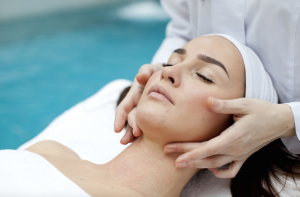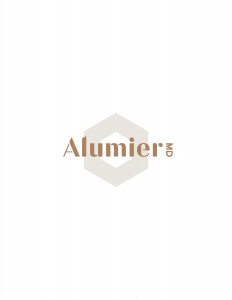Best Sunscreen
The most important term to look for on the best sunscreen label is “broad spectrum”.
“Broad spectrum” coverage signifies coverage against both UVA and UVB rays.
The SPF should be 30 or higher.
All Alumier MD sunscreens start at 40 SPF.
Find out which one is right for you. Receive your personal recommendation by selecting the E-Book Gift for SKIN.
An SPF of 30 blocks 96.7% of UV rays so that only 3.3% will get through, compared with an SPF of 15 which blocks 93.3% of UV rays and lets through 6.7% – twice as much. So what’s the best sunscreen?
Sunscreen is also a must for protecting the skin from free radicals. However, sunscreens only protect up to 55%, not 100%, of free radicals. (Haywood, R., et al, J Invest Dermatol 2006;121:862-868)
What’s the best sunscreen for you? Get your personalised prescription by opting in for the SKIN E-BOOK.
Antioxidants Foods
Are you eating the right antioxidants for your skin? Are bioavailable antioxidants ‘mopping up’ your free radicals?
The Problem with Parabens
Parabens are a group of widely used synthetic preservatives found in cosmetics, deodorants, antiperspirants. They’re easily absorbed into the skin. Parabens are believed to be endocrine disruptors.
Methylparaben, propylparaben and butylparaben are the most commonly used parabens in cosmetics.
Endocrine disruptors are chemicals. They can interfere with the body’s endocrine (hormone) system. This produces adverse developmental, reproductive, neurological, immune effects. Research shows that endocrine disruptors may pose the greatest health risk during prenatal and early postnatal development (NIH – National Institute of Environmental Health Sciences).
Parabens mimic oestrogen. Concerns exist as to how this may affect certain cancers in women and hormone levels in young girls. Parabens were first detected in human breast tissue in 2004 (Darbre et al.). A more recent study has found their presence in all areas of breast tissue (Barr et al 2012). This tissue presence is a cause for concern regarding breast cancer.
The Best Sunscreen
The Environmental Working Group (EWG) is an American environmental organisation that specialises in research and advocacy in areas including toxic chemicals. They’re a non-profit, non-partisan organisation dedicated to protecting human health and the environment (www.ewg.org). They’ve created the Skin Deep Cosmetic Database. This rates products and ingredients according to their safety. Every product and ingredient is given a hazard score and a data availability score.
The Hazard Score
The hazard score, from 1-10 reflects known and suspected hazards of ingredients:
1-2 = low hazard, 3-6 = moderate hazard 7-10 high hazard. The data availability rating takes into account the number of published studies in the scientific literature.
Ingredient safety is calculated using both the hazard and data availability scores. Therefore, the safest ingredients will have low hazard ratings as well as fair, good or robust data availability. So, keep an eye out for these when looking for the best sunscreen.
Unfortunately, parabens most used in most products are rated as moderately-highly hazardous with limited safety data on the EWG rating scale.
PROPYLPARABEN, BUTYLPARABEN, ISOBUTYLPARABEN and ISOPROPYLPARABEN have all been given a high hazard score of 7 with a limited to fair amount of data. METHYLPARABEN and ETHYLPARABEN got a moderate hazard score of 4 with limited data.
Consider the potential health risks of parabens. Also the fact that there are much safer alternatives available. Why should we risk our health?
References:
Barr L, Metaxas B, et al. Measurement of paraben concentrations in human breast tissue at serial locations across the breast from axilla to sternum. Journal of Applied Toxicology 2012;32(3)219-232.
Boberg J, Taxvig C, et al. Possible endocrine disrupting effects of parabens and their metabolites. Reproductive Toxicology 2010;30(2):301-312.
Crinnion WJ. Toxic effects of the easily avoidable phthalates and parabens. Altern Med Rev. 2010: Sep;15(3):190-6.
Darbre PD, Harvey PW. Paraben esters: review of recent studies of endocrine toxicity, absorption, esterase and human exposure, and discussion of potential human health risks. Journal of Applied Toxicology 2008;28(5):561-578.
Darbre PD, Aliarrah A, et al. Concentrations of parabens in human breast tumours. Journal of Applied Toxicology 2004:Jan-Feb;24(1):5-13.
EWG’s Skin Deep Cosmetics Database
NIH – National Institute of Environmental Health Sciences



